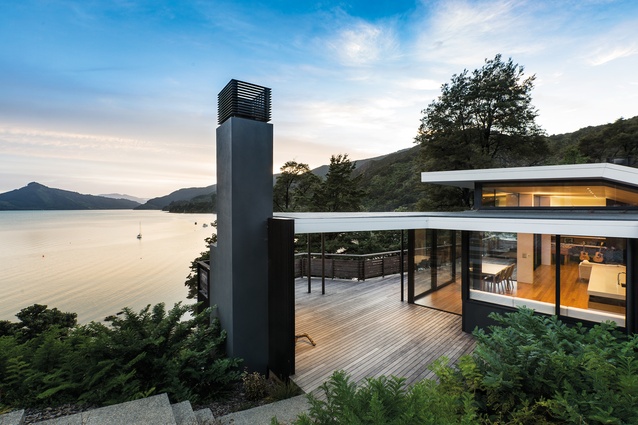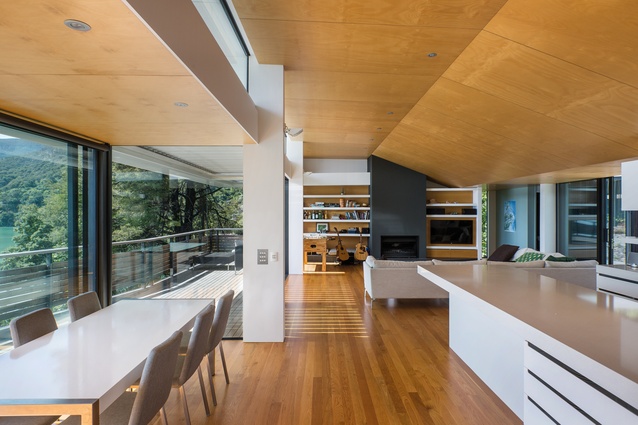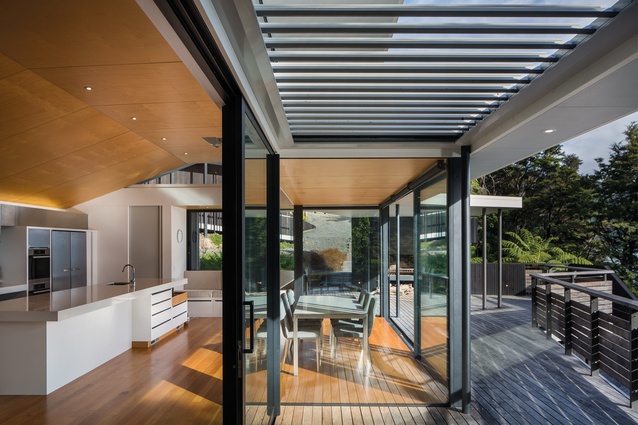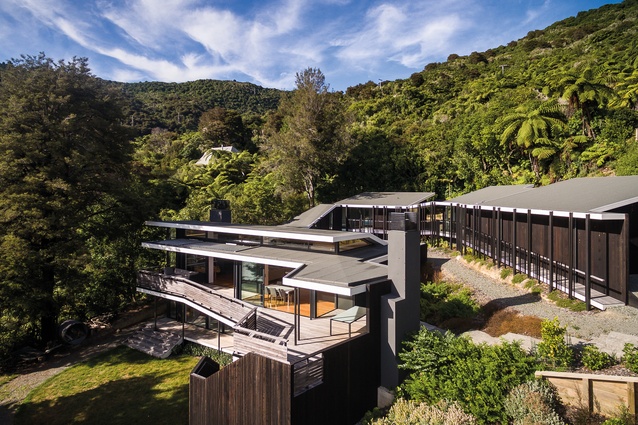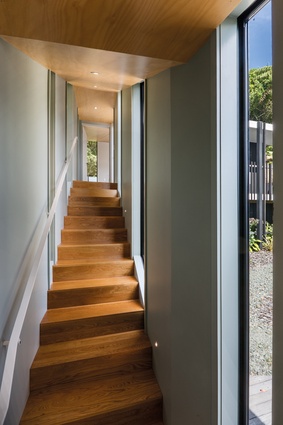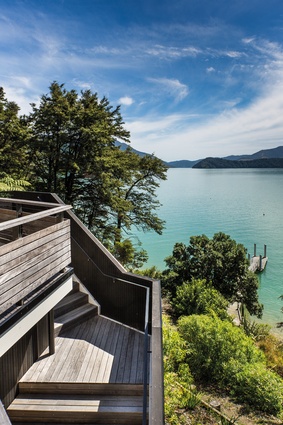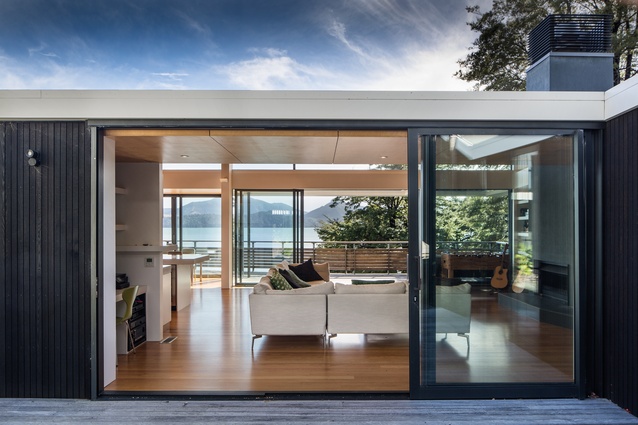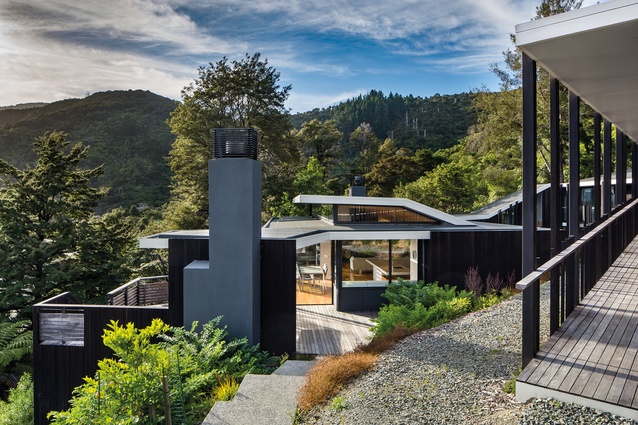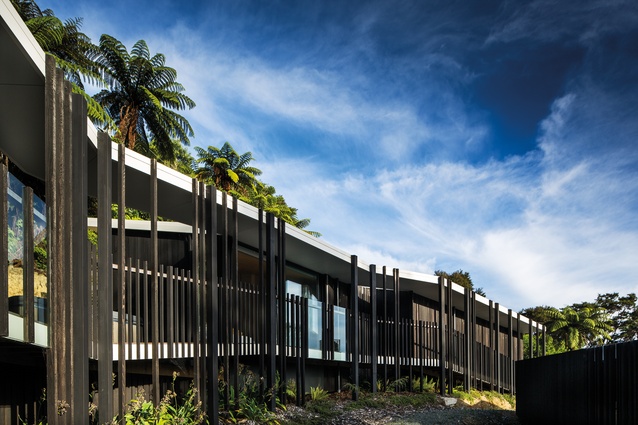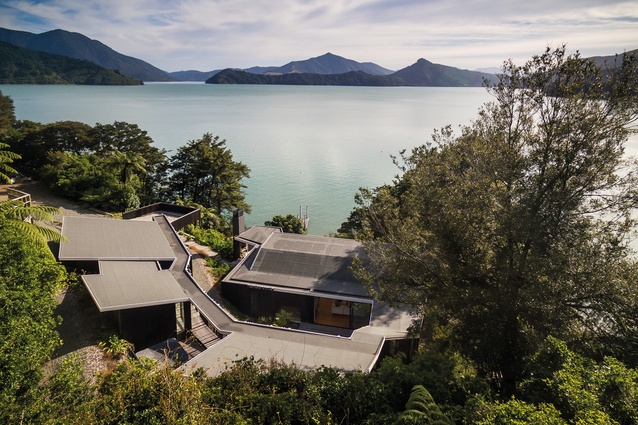Houses revisited: Moetapu Bay house
In Pelorus Sounds, one of New Zealand’s most beautiful locations, sits a stunning home that meanders down the bushy hillside towards the water. First published in 2017.
If you wanted to build a house in one of the most beautiful places on earth, then Pelorus Sounds would be on the ‘top 10’ list. This location is an amazing opportunity for an architect but it’s also a huge challenge. How do you create a stunning design that can proudly hold itself in such an incredible natural environment without detracting from the view? Add to that a bush-clad hillside site that is accessed down a bumpy track with hairpin bends and is prone to slippage during heavy rain.
“We designed the house to subtly fit into the location; it’s strong and recessive at the same time,” explains Gerald Parsonson of Wellington practice Parsonson Architects. “The land’s not perfect so we created a meandering journey down the hillside. There is no front entry as such, so you can enter from different levels and various pathways. This adds complexity to the design and a sense of it being not-quite-a-village but a small community of buildings sitting together on the site.”
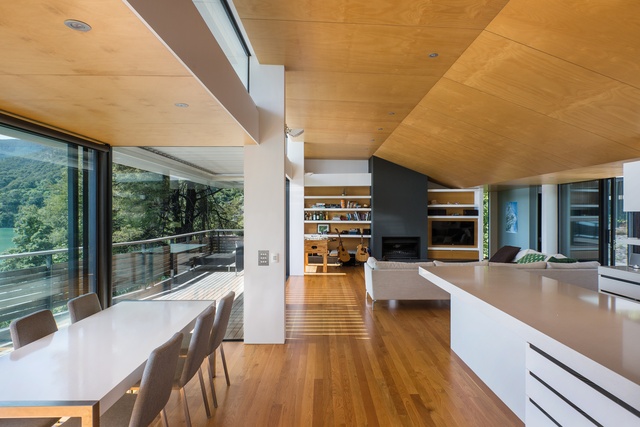
The owners are a Christchurch family with two teenage boys who spend summers and weekends here with friends and family. Fishing is an important preoccupation for the group and a key driver for the design. The family wanted to be able to drive a four-wheeled motorbike from the entrance right down to their boat parked at a jetty on the water’s edge, so the ‘meandering pathway’ was the starting point for the design.
“I think of the house as taking on the generic modern Christchurch house and pushing into it like plasticine, scrunching it down into the contours of the land and letting it pop up where it needs to,” says Parsonson.
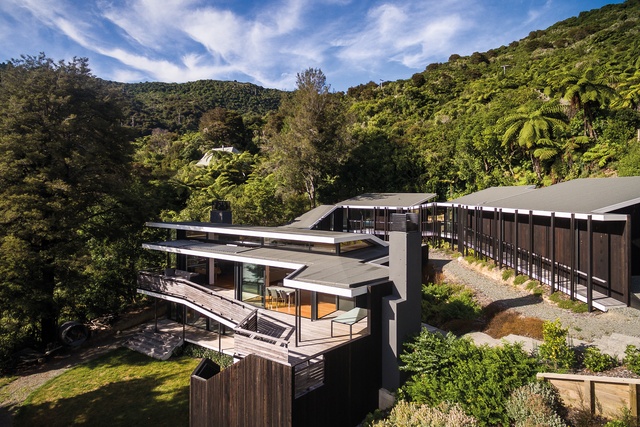
“If you look at the floor plan, it’s pretty folded; it wraps around the contours.” The house also winds itself around a secluded courtyard in the middle of the complex, providing a sheltered outdoor space that benefits from the late afternoon sun.
In the summertime, the doors into the living/kitchen/dining area can be opened up, allowing the wind to blow through. Downstairs are living spaces and bedrooms — a private area suitable for guests and perfect for teenagers, especially for one of the sons who’s a keen guitar player. In the back annex, up top, bedroom units are separated by a decked terrace featuring a spa pool.
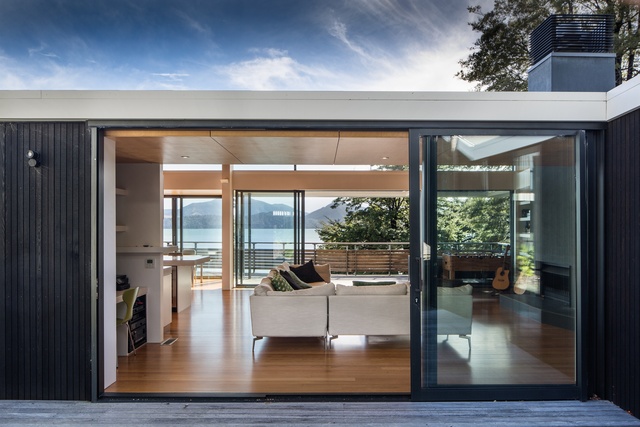
Dark-stained cedar clads the exterior and is used as balustrading and posts, creating a lovely vertical rhythm that relates to the surrounding trees and forest. But the roof is the star of this design: as you enter the property from the road above, it is the first visible part of the house.
“When you approach the house, the roof drops down on you and, from the water, we wanted the layers of the roof to appear, so we left the edges white and kept the walls dark. When you read the house from the distance, you mainly see light roof edges bumping up and down, meandering across the land.”
MATERIAL SELECTOR
Gerald Parsonson discusses the roof design of Moetapu Bay Beach House.
The roof is a striking design. What was your rationale?
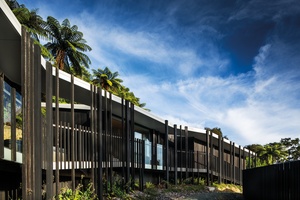
The building follows a meandering pathway from the car parking up above down to the jetty beside the water. The roof shape is unusual in that it alternates between flat and sloping. It could have looked like a dog’s breakfast so we needed a product that allowed us to coat the whole roof in one material.
What other considerations did you need to take into account when choosing materials for the roof?
The roof gets a beating in this location, and the weather can be quite damp. Also, when you approach the house from above, the first thing you see is the roof, so it is important that the roof appears logical and flowing.
What product did you choose?
Because it’s quite a convoluted shape that goes over the whole expanse, we had to have one product, so we chose an Ardex Shelterbit waterproofing membrane.
Click here to see more Houses Revisited. And sign up to our email newsletters to receive Houses Revisited straight to your inbox.
Note: These are stories from our archives and, since the time of writing, some details may have changed including names, personnel of specific firms, registration status, etc.

